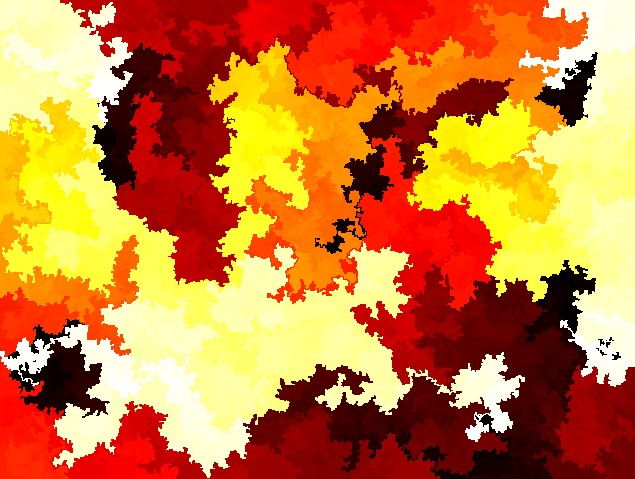 |

Submitted by , posted on 30 January 2005
|
 |

Image Description, by

This is a fractal I came up with when I was bored.
I call it a flood fractal, since it is basically a flood fill where the direction order of recursion is changed randomly. The pixels are colored with a gradient based on the recursion depth. As far as I know, this has not been done before.
It was very simple to code, but the extreme recursion depth would kill the stack size of a normal recursive function. Luckily, I learned to implement my own stack/recursion mechanism in university. (One of the few really useful classes.)
Implemented with TinyPTC and STL.
|
|

